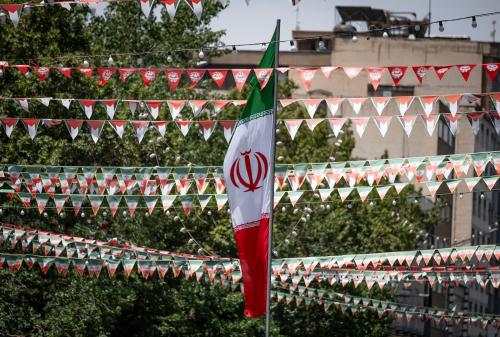On September 17, I had the privilege of testifying before the Congressionally-mandated Commission on the Future of the Army. Its members include retired Army generals Carter Ham, Larry Ellis, JD Thurman, and Jack Stultz, former Pentagon officials Robert Hale, Thomas Lamont, and Kathleen Hicks, and former Sergeant Major of the Army Raymond Chandler III. It owes the Congress a report early in 2016 with its recommendations for how the American Army should be sized, structured, equipped, and otherwise prepared for its likely future challenges in service to the nation.
The basis for my presentation was my new Brookings book, The Future of Land Warfare. It also constitutes the official written version of my testimony. While endorsing much about today’s U.S. Army, an institution I consider to be in generally good shape (if quite stressed and strained by the wars of the 21st century as well as other challenges), I offered three main arguments before the Commission:
- Today’s U.S. Army is fairly small by most relevant measures. At just under one million total soldiers, of which just over 450,000 are on active duty and the rest in the National Guard or Army Reserve, it is about 60 percent the size of the late Cold-War Army. Adjusted for the fact that today’s American population is larger than it was in the 1980s, today’s Army is in fact only about half its latter Cold-War size relative to the demographic base from which it is derived. Globally speaking, the United States has about 5 percent of the world’s population but only 3 percent of its active-duty soldiers. These statistics are only suggestive, not conclusive. But they imply that any ideas for further cuts to the Army should be viewed with considerable wariness. In fact, I would oppose such proposals.
- The Obama administration’s argument, as reflected in its 2012 Defense Strategic Guidance and 2014 Quadrennial Defense Review, that large-scale stabilization operations should no longer guide force sizing for the Army is mistaken. There is no way to be confident that future large-scale stabilization missions (or related operations involving counterinsurgency, peacekeeping, and/or disaster relief) can be dismissed out of hand. In fact, quite a number could have strong relevance to American national security. In my book, I develop scenarios from South Asia to the Middle East to West Africa to Central America that could be important enough to require a U.S. military response (generally as part of a multinational coalition), should they actually occur.
- The “two-war strategy” or “two-war framework” for sizing U.S. ground forces that has guided American defense officials since the Cold War is no longer optimal for future planning purposes. In fact, in the 2014 Quadrennial Defense Review, the second of those two hypothetical wars is no longer considered to be one for which the United States need prepare a dominant and rapid military response. According to that document, it would suffice that the United States “inflict unacceptable damage” upon an enemy in such a second conflict (at least until the first mission was concluded). To my mind, that is a vague and potentially inappropriate goal for American military operations, especially those involving ground forces. As such, I recommend a different paradigm—a “1+2” force sizing construct, with the 1 mission being a high-end war (like another possible conflict in Korea) and the 2 being smaller and multilateral, but potentially long and stressful, simultaneous operations of one type or another. This basis for force planning is in fact no less demanding than that contained in the 2014 Quadrennial Defense Review. But I believe it is more realistic, more intuitive, and therefore more viable as a basis for resourcing and training the Army. It is also more helpful in explaining what the U.S. Army must do to the American people and Congress as well as friends, allies, and other parties around the world.
The Brookings Institution is committed to quality, independence, and impact.
We are supported by a diverse array of funders. In line with our values and policies, each Brookings publication represents the sole views of its author(s).



Commentary
The future of the U.S. Army
September 18, 2015